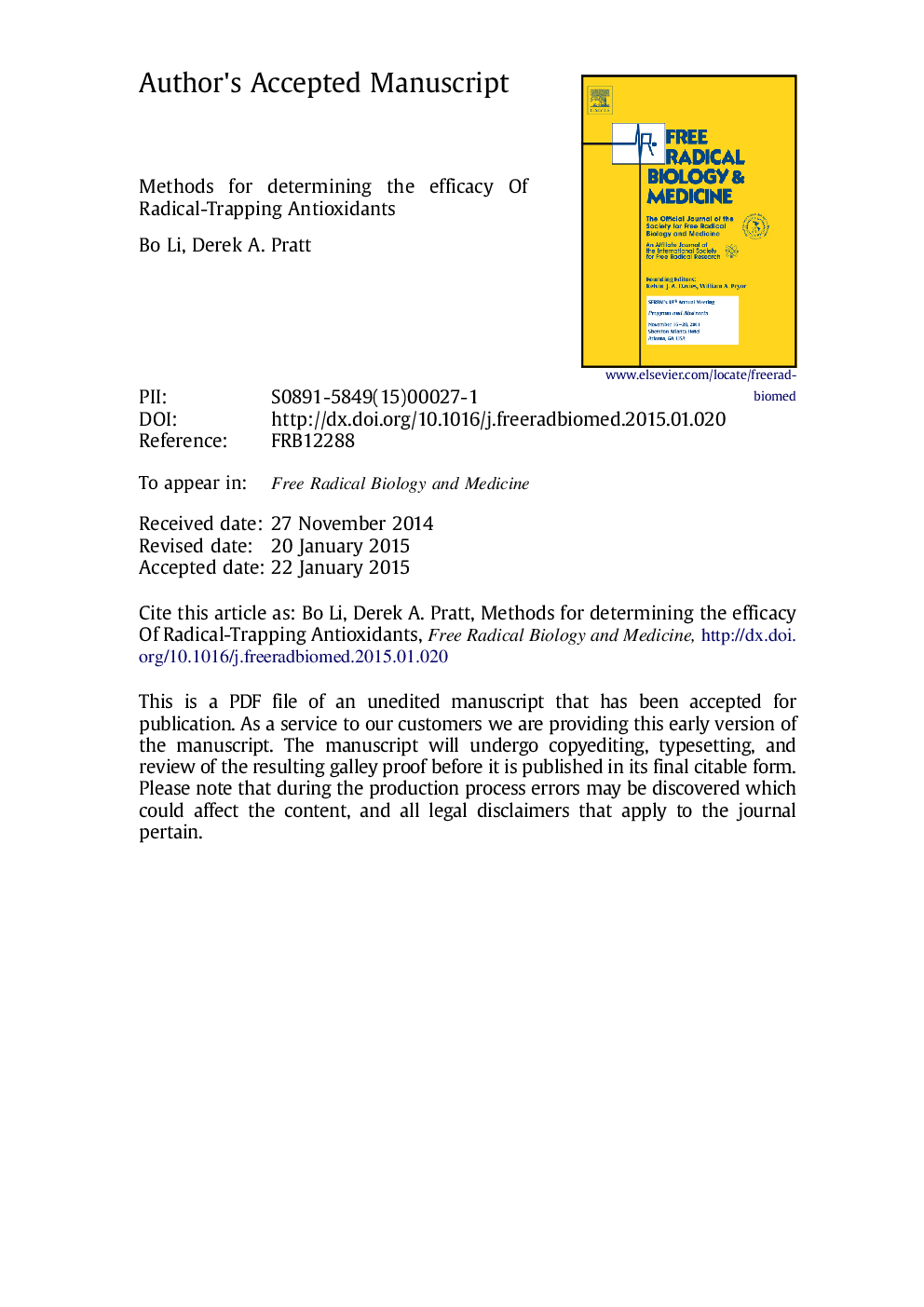| Article ID | Journal | Published Year | Pages | File Type |
|---|---|---|---|---|
| 8269304 | Free Radical Biology and Medicine | 2015 | 49 Pages |
Abstract
Hydrocarbon autoxidation is the free radical chain reaction primarily responsible for the oxidative degradation of organic materials, including those that make up cells, tissues, and organs. The identification of compounds that slow this process (antioxidants) and the quantitation of their efficacies have long been goals of academic and industrial researchers. Antioxidants are generally divided into two types: preventive and radical-trapping (also commonly referred to as chain-breaking). Preventive antioxidants slow the rate of initiation of autoxidation, whereas radical-trapping antioxidants slow the rate of propagation by reacting with chain-propagating peroxyl radicals. The purpose of this review is to provide a comprehensive overview of different approaches to measure the kinetics of the reactions of radical-trapping antioxidants with peroxyl radicals, and their use to study the inhibition of hydrocarbon (lipid) autoxidation in homogeneous solution, as well as biphasic media (lipid bilayers) and cell culture. Direct and indirect approaches are presented and advantages and disadvantages of each are discussed in order to facilitate method selection for investigators seeking to address particular questions in this immensely popular field.
Keywords
PLPCRtaDOPCAIBN2,2,5,7,8-pentamethyl-6-chromanolDCFH-DA2,2′-azobis[2-(2-imidazolin-2-yl)propane] dihydrochloride2,2′-Azobis(2-methylpropionitrile)α-TOHPMCAAPHNrf2AIPHBHTDPPH2,2′-azobis(4-methoxy-2,4-dimethylvaleronitrile)MeOAMVN2′,7′-dichlorodihydrofluorescein diacetate2,6-di-tert-butyl-4-methylphenolα-TocopherolAlpha-tocopherolAntioxidantsAutoxidationTroloxAssaydioleoylphosphatidylcholineKineticsnuclear factor erythroid 2-related factor 2PhenolsLipid peroxidation
Related Topics
Life Sciences
Biochemistry, Genetics and Molecular Biology
Ageing
Authors
Bo Li, Derek A. Pratt,
